Don't wanna be here? Send us removal request.
Text
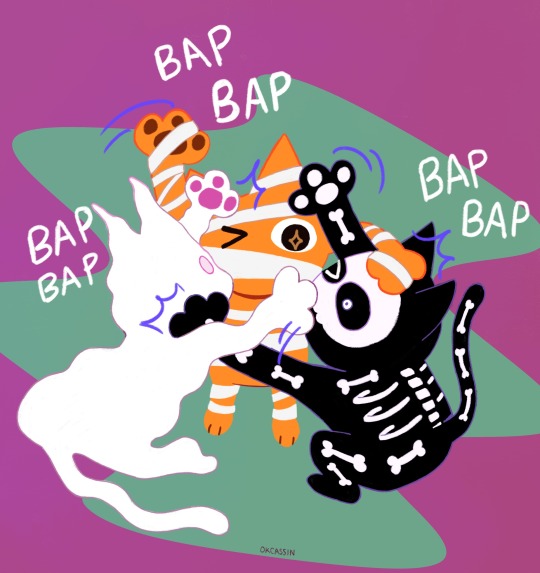
getting you getting you getting yu getting you getting yuo getting you getting u
72K notes
·
View notes
Text
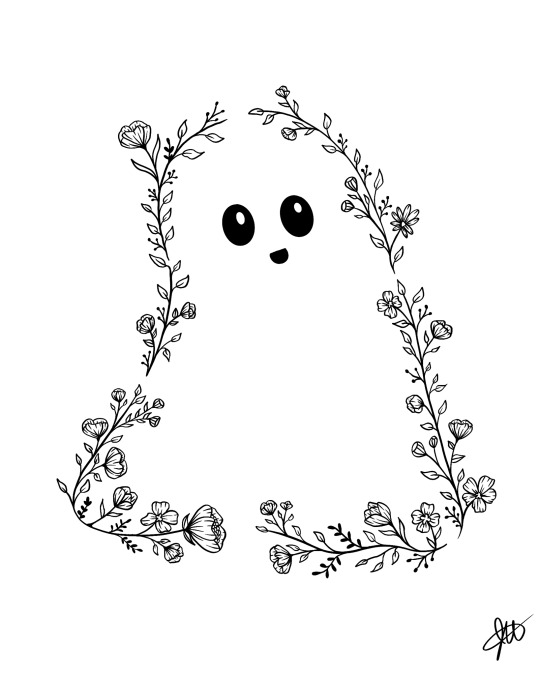
a lil ghosty as spooky season approaches!
ko-fi || insta
1K notes
·
View notes
Text

edit:im seeing a few terfs in here so. trans spongebob blast. maybe it was sponegbob guys <3
------

THATS NOT SPONEGBOB THATS NOT SPONGSBOB
13K notes
·
View notes
Text

with my cat
requested by @dawnryz
#this is my cat#his name is crispy#reigen location#reigen arataka#mob psycho reigen#mob psycho 100#mp100#モブサイ#request
51 notes
·
View notes
Text
“Show, Don’t Tell”…But This Time Someone Explains It

If you’ve ever been on the hunt for writing advice, you've definitely seen the phrase “Show, Don’t Tell.”
Writeblr coughs up these three words on the daily; it’s often considered the “Golden Rule” of writing. However, many posts don't provide an in-depth explanation about what this "Golden Rule" means (This is most likely to save time, and under the assumption that viewers are already informed).
More dangerously, some posts fail to explain that “Show, Don’t Tell” occasionally doesn’t apply in certain contexts, toeing a dangerous line by issuing a blanket statement to every writing situation.
The thing to take away from this is: “Show, Don’t Tell” is an essential tool for more immersive writing, but don't feel like a bad writer if you can’t make it work in every scenario (or if you can’t get the hang of it!)
1. What Does "Show, Don't Tell" Even Mean?

“Show, Don’t Tell” is a writing technique in which the narrative or a character’s feelings are related through sensory details rather than exposition. Instead of telling the reader what is happening, the reader infers what is happening due to the clues they’ve been shown.
EXAMPLE 1:
Telling: The room was very cold. Showing: She shivered as she stepped into the room, her breath steaming in the air.
EXAMPLE 2:
Telling: He was furious. Showing: He grabbed the nearest book and hurled it against the wall, his teeth bared and his eyes blazing.
EXAMPLE 3 ("SHOW, DON'T TELL" DOESN'T HAVE TO MEAN "WRITE A LOT MORE")
Telling: The room hadn't been lived in for a very long time. Showing: She shoved the door open with a spray of dust.
Although the “showing” sentences don’t explicitly state how the characters felt, you as the reader use context clues to form an interpretation; it provides information in an indirect way, rather than a direct one.
Because of this, “Show, Don’t Tell” is an incredibly immersive way to write; readers formulate conclusions alongside the characters, as if they were experiencing the story for themselves instead of spectating.
As you have probably guessed, “showing” can require a lot more words (as well as patience and effort). It’s a skill that has to be practiced and improved, so don’t feel discouraged if you have trouble getting it on the first try!
2. How Do I Use “Show, Don’t Tell” ?

There are no foolproof parameters about where you “show” and not “tell" or vice versa; it’s more of a writing habit that you develop rather than something that you selectively decide to employ.
In actuality, most stories are a blend of both showing and telling, and more experienced writers instinctively switch between one and another to cater to their narrative needs. You need to find a good balance of both in order to create a narrative that is both immersive and engaging.
i. Help When Your Writing Feels Bare-Bones/Soulless/Boring
Your writing is just not what you’ve pictured in your head, no matter how much you do it over. Conversations are stilted. The characters are flat. The sentences don’t flow as well as they do in the books you've read. What’s missing?
It’s possibly because you’ve been “telling” your audience everything and not “showing”! If a reader's mind is not exercised (i.e. they're being "spoon-fed" all of the details), your writing may feel boring or uninspired!
Instead of saying that a room was old and dingy, maybe describe the peeling wallpaper. The cobwebs in the corners. The smell of dust and old mothballs. Write down what you see in your mind's eye, and allow your audience to formulate their own interpretations from that. (Scroll for a more in-depth explanation on HOW to develop this skill!)
ii. Add More Depth and Emotion to Your Scenes
Because "Show, Don't Tell" is a more immersive way of writing, a reader is going to feel the narrative beats of your story a lot more deeply when this rule is utilized.
Describing how a character has fallen to their knees sobbing and tearing our their hair is going to strike a reader's heart more than saying: "They were devastated."
Describing blood trickling through a character's fingers and staining their clothes will seem more dire than saying: "They were gravely wounded."
iii. Understand that Sometimes Telling Can Fit Your Story Better
Telling can be a great way to show your characters' personalities, especially when it comes to first-person or narrator-driven stories. Below, I've listed a few examples; however, this list isn't exclusive or comprehensive!
Initial Impressions and Character Opinions
If a character describes someone's outfit as "gaudy" or a room as "absolutely disgusting," it can pack more of a punch about their initial impression, rather than describing the way that they react (and can save you some words!). In addition, it can provide some interesting juxtaposition (i.e. when a character describes a dog as "hideous" despite telling their friend it looks cute).
2. Tone and Reader Opinions
Piggybacking off of the first point, you can "tell, not show" when you want to be certain about how a reader is supposed to feel about something. "Showing" revolves around readers drawing their own conclusions, so if you want to make sure that every reader draws the same conclusion, "telling" can be more useful! For example, if you describe a character's outfit as being a turquoise jacket with zebra-patterned pants, some readers may be like "Ok yeah a 2010 Justice-core girlie is slaying!" But if you want the outfit to come across as badly arranged, using a "telling" word like "ridiculous" or "gaudy" can help set the stage.
3. Pacing
"Show, don't tell" can often take more words; after all, describing a character's reaction is more complicated than stating how they're feeling. If your story calls for readers to be focused more on the action than the details, such as a fight or chase scene, sometimes "telling" can serve you better than "showing." A lot of writers have dedicated themselves to the rule "tell action, show emotion," but don't feel like you have to restrict yourself to one or the other.
iv. ABOVE ALL ELSE: Getting Words on the Page is More Important!
If you’re stuck on a section of your story and just can’t find it in yourself to write poetic, flowing prose, getting words on the paper is more important than writing something that’s “good.” If you want to be able to come back and fix it later, put your writing in brackets that you can Ctrl + F later.
Keeping your momentum is the hardest part of writing. Don't sacrifice your inspiration in favor of following rules!
3. How Can I Get Better at “Show, Don’t Tell”?
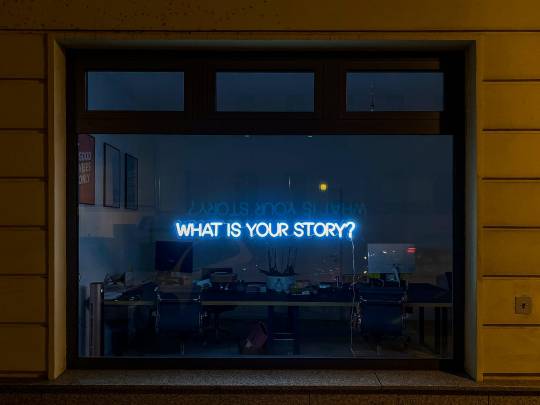
i. Use the Five Senses, and Immerse Yourself!
Imagine you’re the protagonist, standing in the scene that you have just created. Think of the setting. What are things about the space that you’d notice, if you were the one in your character’s shoes?
Smell? Hear? See? Touch? Taste?
Sight and sound are the senses that writers most often use, but don’t discount the importance of smell and taste! Smell is the most evocative sense, triggering memories and emotions the moment someone walks into the room and has registered what is going on inside—don’t take it for granted. And even if your character isn’t eating, there are some things that can be “tasted” in the air.
EXAMPLE:
TELLING: She walked into the room and felt disgusted. It smelled, and it was dirty and slightly creepy. She wished she could leave. SHOWING: She shuffled into the room, wrinkling her nose as she stepped over a suspicious stain on the carpet. The blankets on the bed were moth-bitten and yellowed, and the flowery wallpaper had peeled in places to reveal a layer of blood-red paint beneath…like torn cuticles. The stench of cigarettes and mildew permeated the air. “How long are we staying here again?” she asked, flinching as the door squealed shut.
The “showing” excerpt gives more of an idea about how the room looks, and how the protagonist perceives it. However, something briefer may be more suited for writers who are not looking to break the momentum in their story. (I.e. if the character was CHASED into this room and doesn’t have time to take in the details.)
ii. Study Movies and TV Shows: Think like a Storyteller, Not Just a Writer
Movies and TV shows quite literally HAVE TO "show, and not tell." This is because there is often no inner monologue or narrator telling the viewers what's happening. As a filmmaker, you need to use your limited time wisely, and make sure that the audience is engaged.
Think about how boring it would be if a movie consisted solely of a character monologuing about what they think and feel, rather than having the actor ACT what they feel.
(Tangent, but there’s also been controversy that this exposition/“telling” mindset in current screenwriting marks a downfall of media literacy. Examples include the new Percy Jackson and Avatar: The Last Airbender remakes that have been criticized for info-dumping dialogue instead of “showing.”)
If you find it easy to envision things in your head, imagine how your scene would look in a movie. What is the lighting like? What are the subtle expressions flitting across the actors' faces, letting you know just how they're feeling? Is there any droning background noise that sets the tone-- like traffic outside, rain, or an air conditioner?
How do the actors convey things that can't be experienced through a screen, like smell and taste?
Write exactly what you see in your mind's eye, instead of explaining it with a degree of separation to your readers.
iii. Listen to Music
I find that because music evokes emotion, it helps you write with more passion—feelings instead of facts! It’s also slightly distracting, so if you’re writing while caught up in the music, it might free you from the rigid boundaries you’ve put in place for yourself.
Here’s a link to my master list of instrumental writing playlists!
iv. Practice, Practice, Practice! And Take Inspiration from Others!
“Show Don’t Tell” is the core of an immersive scene, and requires tons of writing skills cultivated through repeated exposure. Like I said before, more experienced writers instinctively switch between showing and telling as they write— but it’s a muscle that needs to be constantly exercised!
If I haven’t written in a while and need to get back into the flow of things, I take a look at a writing prompt, and try cultivating a scene that is as immersive as possible! Working on your “Show, Don’t Tell” skills by practicing writing short, fun one-shots can be much less restrictive than a lengthier work.
In addition, get some inspiration and study from reading the works of others, whether it be a fanfiction or published novel!
If you need some extra help, feel free to check out my Master List of Writing Tips and Advice, which features links to all of my best posts, each of them categorized !
Hope this helped, and happy writing!
3K notes
·
View notes
Text
a ps freakin a
“i want to write but i can’t seem to get anything down, i open a document and stare at a blank page for so long because i have no idea how to start my story hhhhnnnngggghhhh”
plot twist
you don’t have to start at the beginning
write the scenes are strongest in your mind first! it’ll make you more interested in writing the story, get you some practice, and orient yourself. THEN you go write the beginning once you know where you’re trying to go!! upend writing hierarchy!! knock out a first draft!! save the bees!!
3K notes
·
View notes
Text
If You’re Gonna Make Something Wheelchair Accessible, Don’t Make it a Thing
Here’s some examples awkward accessibility being a thing:
Your at a hotel that has a lift to get you from one sub-floor to another, but the lift can only be unlocked and operated by one specific person that the hotel now has to go find. Sure, they’ve made the entrance to the sub-floor is accessible, but now it’s a thing.
The buses are wheelchair accessible but the driver has to stop the bus, take 30 seconds to lower the goddamn ramp, move passengers out of their seats, hook up the straps and then secure you in the bus. Sure, they’ve made the busses accessible but now it’s a thing.
The restaurant has an accessible entrance, but it’s past the trash room and through the kitchen. Sure, the restaurant is accessible, but now it’s an insulting thing.
Here’s some great examples of accessibility not being a thing:
The train to the airport pulls up flush with the platform. I board with everyone else and sit wherever the fuck I want. Riding the train is accessible and not a thing.
In Portland, I press a button the side of the streetcar and a ramp automatically extends at the same time the door opens. I board in the same amount of time as everyone else. This is not a thing.
I get that it is difficult to design for wheelchair accessibility, but folks need to start considering the overall quality of the experience versus just thinking about meeting the minimum requirements.
121K notes
·
View notes
Text
i cannot emphasise enough how much you need to create something. anything. it doesn't matter if you suck. you don't need to monetise it, or make it your career. you can restart an old hobby; you can start from scratch. it doesn't matter. you just need to hold something and be able to say "i did that". baking, drawing, painting, writing, coding, crafts, whatever. make something ! you cannot have all your hobbies be a form of consumption. it's fun, it's great in its own right. but the single best action to make yourself feel better, to calm your mind, to gain self esteem, is to Create
33K notes
·
View notes
Text
Your suffering is enough. Your pain is enough. I'm sorry you were made to feel that you had to prove you needed help.
397 notes
·
View notes
Photo
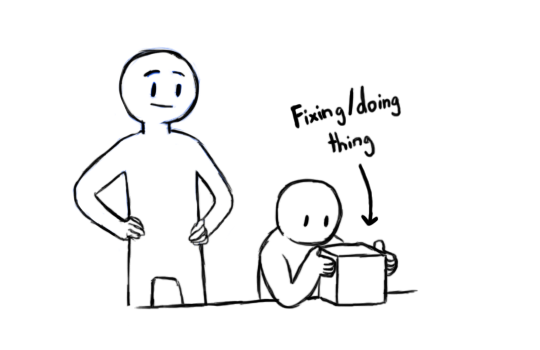
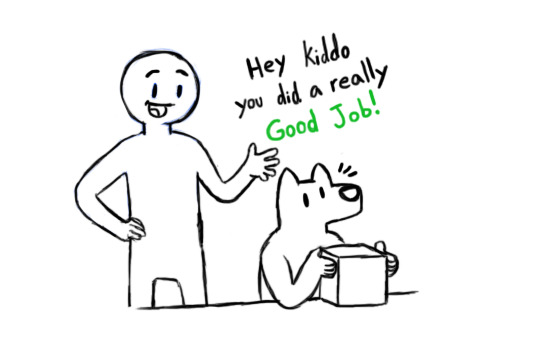


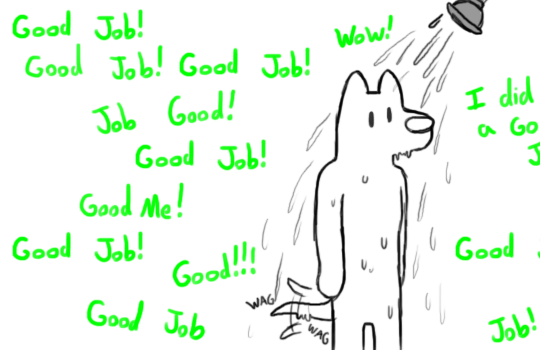

471K notes
·
View notes
Text
if you have recently found someone who turned out to not be right for you, remember:
you deserve someone who will make you happy
you deserve someone who doesn’t make you question if you’re their priority
you deserve someone who listens
you deserve someone who validates your feelings
you deserve someone who loves you just as much as you love them
you deserve someone who makes time for you
you deserve someone who gushes about you
you deserve someone who makes sure you know they enjoy spending time with you
you deserve someone who makes you laugh on your worst days
you deserve someone who makes you go to bed with a smile on your face, not tears in your eyes
you deserve someone who doesn’t make you worry you might say the wrong thing
you deserve someone who is willing to drop everything to comfort you on a really bad day
you deserve someone who pays attention to the little things you like and dislike
you deserve someone who gets you
you deserve someone who sees a future with you
you deserve someone who appreciates you
you deserve better
11K notes
·
View notes
Text
Less: “You can do anything you put your mind to.” More: “It’s okay and completely understandable if you’re struggling to do the things you want and need to due to your diagnosis and it isn’t your fault if some things are hard or impossible right now.”
Less: “You’re limitless.” More: “Everybody has limits and you’re not a failure if your diagnosis gives you limits that most people don’t have. Having limits and learning to accommodate them is a natural, important and healthy thing.
Less: “Change your attitude, change your life.” More: “Your diagnosis and how it impacts your life isn’t an attitude problem and getting better is much more complicated than thinking positive thoughts and that’s okay.”
Less: “Stay positive and you’ll be happy.” More: “It’s okay to struggle with negative emotions and nobody can be positive all the time. Struggling to stay positive doesn’t make you a bad or weak person.”
Less: “You have so many wonderful reasons to live.” More: “Your life is valuable and you deserve to be here even if it feels like you don’t have many reasons to live right now - cause you’ll find those reasons along the way.”
Less: “Remember that life is amazing!” More: “Your life may suck right now but that doesn’t mean it won’t be worth it in the long run.”
Less empty platitudes, more compassion.
2K notes
·
View notes
Text

More for you here, my friend
694 notes
·
View notes
Text
The number one thing I wish the general public understood about autistic people at the moment is that our brains are fundamentally wired differently, from birth and via genetics, and our struggles are not because our parents have failed us in some way.
A well parented autistic child is one who's parents (and school if they have one) have adapted to and recognised their disabilities.
This is a child who has the opportunity to be physically and mentally healthier due to reduced chronic stress.
An autistic child who grows up having to pretend to be a neurotypical child is a child who has not been ideally raised.
Chronic stress in childhood causing mental and physical illnesses in autistic people is a very real and large concern.
Physical and mental health conditions are more common in autistic adults, and autistic adults statistically die younger.
This is purely my opinion - but the obvious stressors we deal with are increased childhood stress and trauma, which are known to impact adult health.
Adapting to autistic children's differences rather than denying them or using a behaviorist approach is a protective approach for their adult selves.
It's time to reframe how we perceive good parenting to include allowing disabled children to be disabled. ❤️
From Spectrumy at https://www.facebook.com/profile.php?id=100044510616450&mibextid=ZbWKwL (links to evidence in comments on original post)
#autistic#autism#neurodivergent#neurodivergence#invisible disabilities#trauma#teaching#parenting#accessibility
6 notes
·
View notes
Text
i don't know who needs to hear this, but 'perfect' writing is a trap. all writing is subjective. what we create today, we may see as flawed tomorrow. what we see as flawed today, we may see as perfect tomorrow.
writing is the act of transmuting the human experience through words. and the human experience? it's a messy, chaotic thing filled with rough edges and uneven lines and mistakes and failures. you can erase all of that. you can. but then you're left with something sterile and artificial. you've effectively squeezed the soul out of your work, and i can think of nothing less appealing.
this isn't to say don't edit your work. please do. but keep it within reason, and make sure you're moving forward and not backward. momentum is key.
don't sit on an idea for three decades waiting for that dance with inspiration, or that dynamite first line, or that eureka plot twist, or the words to flow like magic from your fingertips. because it won't happen. and if it does, it'll strike like lightning and disappear twice as fast. the only surefire way to finish a story is to start.
so write. for the love of god, just write.
along the way, things will fall in line. i promise. and if they don't? then they already have. the magic of art is that everything we create is a snapshot of who we are at the time of creation. it's like a time capsule of human experience, and there's a beauty in that authenticity-- in the mistakes we make and the wrong turns we take. don't run from them. embrace them.
let their lessons flow through you and channel them into something tangible. if it's hard, then start with one word and keep going. don't erase it. don't start over. don't let yourself believe your story isn't worth telling because if you don't tell it, then no one else will. and that'd be a damn shame.
so one word a day. one sentence a week.
whatever it takes.
it might be tough letting go of the idea of perfect. silencing your inner editor. your inner critic. it might be tough realizing that your story will never meet your standards, not completely, but it won't be half as tough as looking back and wondering where all the days, weeks, and years went; that in the pursuit of perfection, you forgot to ever write a story at all.
so leave perfect behind. readers don't want it. why would they? they can't possibly relate to perfect-- none of us can.
instead, give readers a window to your imagination, stormclouds and all. you'll be surprised by how many stick around for the rain, how many relish the sound of your thunder, and how many cherish the worlds that only you could bring to life.
1K notes
·
View notes

